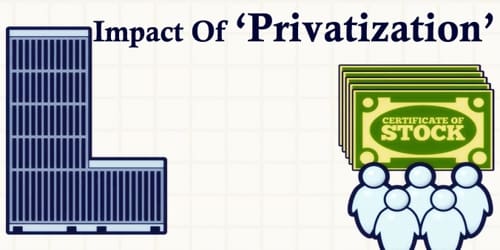India has the world’s largest kid labor force market. In India, the problem of child labor is massive. Many people are concerned that youngsters are being exploited and coerced into labor while not obtaining critical development education. India is the most prominent example of a country afflicted by the problem of child labor.’
There are no current numbers available for the number of children involved in child labor in India. This challenge is due to the Indian government’s “has been irresponsible in refusing to gather and analyze current and relevant data on the atrocities of child labor. Official figures are still based on the 1981 census as of 1996 “. The 1981 Indian census reports that there were 13.6 million child laborers in India. Indian government extrapolations of 1981 data place the current number of child laborers at between seventeen and twenty million (Human Rights Watch 1996).
This extrapolation appears highly improbable, given that “the Official National Sample Survey of 1983 reports 17.4 million child laborers, while a study sponsored by the Labour Ministry concluded that the child-labor force was 44 million”: UNICEF “cites figures ranging from 75 to 90 million child laborers under the age of fourteen.” Individuals may fail to reveal child work participation during surveys for fear of being persecuted, which may be a universal challenge in gathering reliable data.
The number of child laborers varies greatly, but they are all much higher when the Child Economic Activity rate for males was 13.5 percent and 10.3 percent for females from 1980 to 1991. In comparison, other emerging countries with lower activity rates include Sri Lanka (5.2 percent for males and 4.7 percent for females) and Malaysia (8.9 percent for males and 6.6 percent for females). According to historical census data, the overall child labor participation rate was 12.69 percent in 1961 and 7.13 percent in 1971. This statistic is misleading since the definitions of child work in the two censuses differ, making a comparison impossible. The data shows that in a span of twenty years (1961-1981), the proportion of children has not changed significantly.
Child work contributes to the poor’s source of income. According to a study conducted by the International Labour Organization’s Bureau of Statistics, “Children’s work was considered essential in maintaining the economic level of households, either in the form of work for wages, or help in household enterprises or of household chores in order to free adult household members for economic activity elsewhere.” The study discovered that a child’s income accounted for between 34 and 37 percent of total household income in some circumstances. According to the findings of this study, the income of a child laborer is critical to the survival of a poor family.
Despite the fact that juvenile laborers are exploited for the same type of work as adults, studies demonstrate that they are paid less. Although 39.5 percent of firms indicated that kid workers earn the same as adults, when the percentage of employers that admitted that earnings for children are lower is added up, the result is 35.9 percent. The proportion of India’s people living in poverty is relatively high. Poverty has a clear association with child labor, and studies have found a positive correlation. Poor families require money to survive, and children provide an additional source of income.
Even the most heinous forms of bonded child labor are based on the twin criteria of (1) poverty and (2) a lack of a social security network. There are limited sources of bank loans, governmental loans, or other credit sources for the poor, and even if sources are accessible, few of those living in poverty qualify, or they are hesitant to apply for any loans for fear of bribes or penalties if they are unable to repay the loan. The local moneylender enters the picture here; for an average of two thousand rupees, parents exchange their child’s labor to local moneylenders (Human Rights Watch 1996).
Because bonded child laborers’ earnings are less than the interest on their loans, these bonded youngsters are obliged to work while the interest on their loans grows. A bound child can be released only if his or her parents pay a lump fee, which is particularly difficult for the impoverished.
Though poverty is one of the primary causes of child labor, it is not the only one; insufficient educational facilities or even the high cost of education leave children with no choice but to work. Parental attitudes also contribute to child labor; some parents believe that children should work to develop skills useful in the labor market rather than wasting time in formal education.
Since its independence, India has vowed to oppose child labor. Article 24 of the Indian Constitution provides unequivocally that “no child under the age of fourteen years shall be employed to work in any industry or mine or in any hazardous employment”; and Article 39 (e) mandates State policy so that “the health and strength of employees and the tender age of children are not abused, and citizens are not forced by economic necessity to enter avocations unsuited to their age or strength.” These two Articles demonstrate that India has always had the goal of caring for its children and ensuring worker safety. The Bonded Labor System Act of 1976 fulfills the Indian Constitution’s directive of ending forced labor.
The Act “frees all bound laborers, cancels all existing obligations against them, prevents the formation of new bondage agreements, and mandates the state to assist in the economic rehabilitation of liberated bonded laborers”: The Indian government adopted the Child Labor Act in 1986 in response to child labor. The goal of this legislation is to “prohibit the employment of minors under the age of 14 in designated dangerous activities and processes.” This example demonstrates that the Indian government can pass laws prohibiting any inhumane activity but cannot enforce them since many of the political leaders who run the government own factories where children are exploited.
A recent step forward in government policy happened in August 1994, when then-Prime Minister Narasimha Rao revealed his proposal to eliminate the Child Labor Program. By the year 2000, this program promises to eradicate child work for two million children in hazardous industries as defined by the Child Labor Act of 1986. The program relies around a financial incentive for youngsters to leave their jobs and enroll in non-formal education: a one-hundred-rupee payment as well as one meal per day for attending school. It is unknown where the cash for this initiative will come from.
The government needs $8.6 billion for the program over five years, however “just around 4% of the five-year estimated expenditure was provided for child labor eradication projects in 1995-1996.”
One of the causes of the problem of child work is the problem of illiteracy. “The general condition of the education system can have a substantial influence on the supply of child labor,” it has been noticed. Dropout percentages reported by the Department of Education show that 35% of males and 39% of females drop out. The concept of compulsory education, which requires all school-aged children to attend school, combats the force of poverty, which pulls children out of school. Policies relating to compulsory education not only force children to attend school but also contribute appropriate funds to the primary education system, instead of higher education.
The issue of child labor includes social, economic, and political dimensions. It cannot be eradicated by focusing on a single determinant, such as education, or by enforcing child labor rules harshly. Before eradicating child labor, the Indian government must ensure that the poor’s needs are met. When poverty is eliminated, the demand for child labor decreases. No matter how hard India tries, child labor will always remain as long as the political and bureaucratic establishments are sincerely striving in this direction. Child labor is impeding India’s progress as a country. Children are becoming illiterate as a result of their parents’ job and lack of attendance in school.
Every generation, a cycle of poverty is developed, and the necessity for child labor is resurrected. India must address the issue by addressing the underlying causes of child labor through official regulations, with the coordination and participation of non-governmental organizations, and by enforcing these policies honestly and in good faith. We cannot address the typical problem of child labor until we eliminate the sources permanently; half-hearted actions are insufficient. If we can eliminate poverty, child labor will be extinct in India.
















